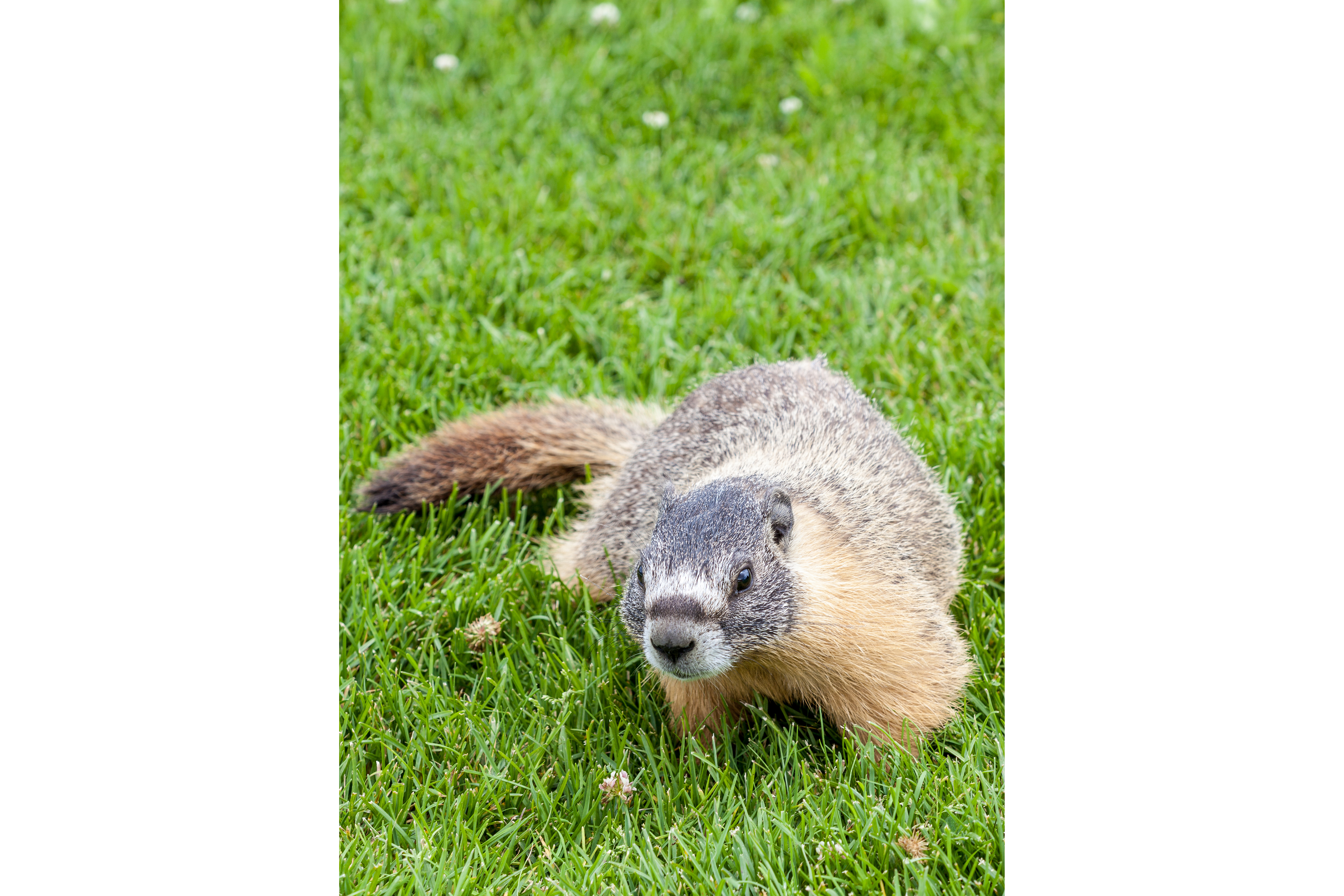Hoary marmot
(Marmota caligata)

Description
The hoary marmot (Marmota caligata) is a species of marmot that inhabits the mountains of northwest North America. Hoary marmots live near the tree line on slopes with grasses and forbs to eat and rocky areas for cover. It is the largest North American ground squirrel and is often nicknamed "the whistler" for its high-pitched warning issued to alert other members of the colony to possible danger. The animals are sometimes called "whistle pigs". Whistler, British Columbia, originally London Mountain because of its heavy fogs and rain, was renamed after these animals to help make it more marketable as a resort. The closest relatives of the species are the yellow-bellied, Olympic, and Vancouver Island marmots, although the exact relationships are unclear. The hoary marmot is a large, bulky, ground squirrel, with short, heavy limbs, and a broad head. Adults range from 62 to 82 cm (24 to 32 in) in total length, including a 17 to 25 cm (6.7 to 9.8 in) tail. The species is sexually dimorphic, with males being significantly larger than females in most subspecies. Because of their long winter hibernation, during which they survive on fat reserves, the weight of the animals varies considerably over the course of the year, from an average of 3.75 kg (8.3 lb) in May to around 7 kg (15 lb) in September, for a fully grown adult. A few fall adult males can commonly range up to a weight of 10 kg (22 lb). The record sized autumn male specimen attained a mass of nearly 13.5 kg (30 lb), possibly the largest size known for any marmot. Going on its average size relative to other marmot species, it is slightly smaller on average than the Olympic marmot, similar in size to the Vancouver marmot and broadly overlaps in size with several lesser-known Asian marmot species as well. The word "hoary" refers to the silver-gray fur on their shoulders and upper back; the remainder of the upper parts have drab- or reddish-brown fur. The head is black on the upper surface, with a white patch on the muzzle, white fur on the chin and around the lips, and grizzled black or brown fur elsewhere. The feet and lower legs are black, sometimes with white patches on the fore feet. Marmots have long guard hairs that provide most of the visible colour of their pelage, and a dense, soft underfur that provides insulation. The greyish underparts of the body lack this underfur, and are more sparsely haired than the rest of the body. Hoary marmots moult in the early to mid summer.
Taxonomic tree:







